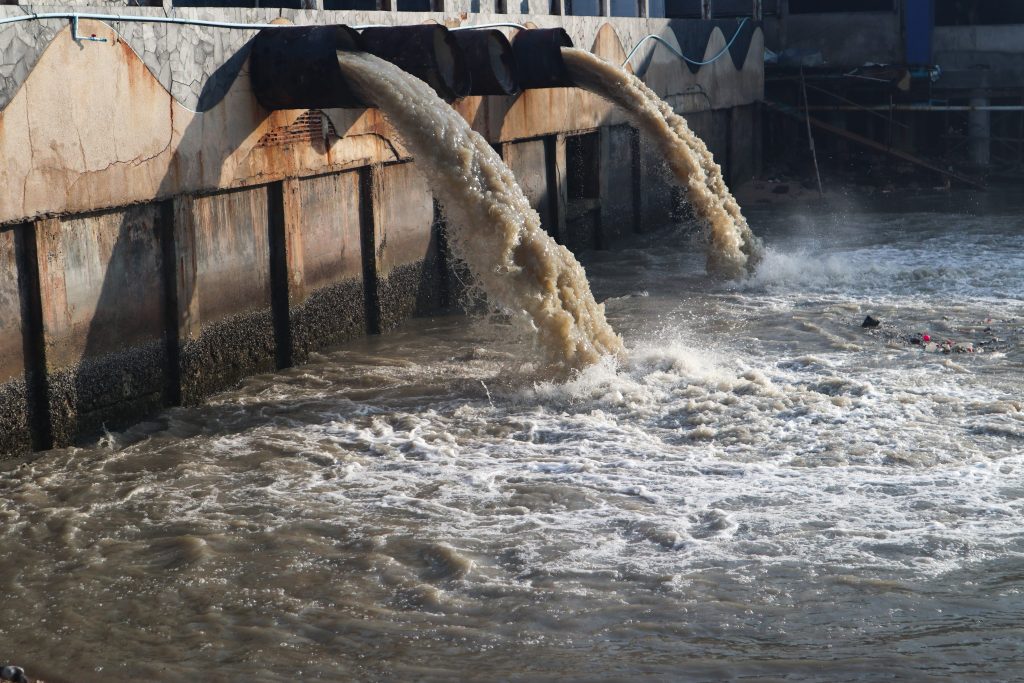
Water is so universally useful that it can still be used for other purposes if it could just be made to go through waste treatment processes. Although industrial wastewater already contains soil and silt, chemical contaminants, and other insoluble materials, it can still be recovered and repurposed using different wastewater treatment processes.
The lack of industrial wastewater treatment has caused both environmental pollution and waste of recoverable resources. Not a lot of people talk about it, but more than 40% of wastewater from industrial processes are discharged into the environment without going through any form of treatment. This means tons of chemicals, salt, metals, animal proteins, and clean water are disposed of unnecessarily.
Here are some suggested ways to treat industrial wastewater:
Physical Water Treatment
One of the most common practices of industrial wastewater treatment is the use of physical processes. Wastewater is cleaned using physical methods and processes, such as screening, skimming, and sedimentation. These processes are used to separate and remove the solid elements.
Sedimentation is one of the main techniques of wastewater treatment using physical processes. In sedimentation, the heavy particles or insoluble elements are suspended so they can be separated from the liquid portions. The process usually waits for the insoluble materials to sink and settle down at the bottom of settlement tanks. Once they’ve settled down, the water can be separated from them.
Another process of wastewater treatment that employs physical processes is called aeration. This process uses air to circulate through the water and provide oxygen. There are other physical processes, such as filtration that filters out all the contaminants from the water. The wastewater is made to go through different kinds of filters. The filters capture the contaminants and insoluble materials. One of the most common filters used is sand filter. Grease is easily removed from wastewater through the use of sand filters.
Separate Salt From Water
The common notion is that industrial water is hazardous because it contains chemicals that can contaminate the environment—this is true. But, the presence of salt in industrial wastewater can be as potentially damaging as chemical contaminants. Industrial wastewater is usually disposed of by dumping it into rivers and creeks from factory spillways. When wastewater that contains salt is dumped into rivers, the brine elements will disrupt aquatic ecosystems. This can potentially cause soil degradation and massive damage to crops.
The most sustainable way to use industrial wastewater that has salt is to keep it within the site. It can be further used for other things within the industrial plant or factory. But, the salt must, first, be taken out because it can cause corrosion of pipes, storage tanks, and machinery. It’s important for plant workers to understand the impact of corrosion and techniques to avoid them. These things are often discussed as part of training courses on manufacturing processes.
The traditional way to remove salt from industrial wastewater was to use evaporator machines. This heated wastewater to high temperatures, at which point salt could be separated from water. But, this used up a lot of power. It also produced too much chemical waste that’s highly corrosive.
At present, a new technology using a cool separation process to remove salt from industrial wastewater has been developed. This new technology employs eutectic freeze crystallisation (EFC). EFC is the point at which ice and salt crystals are formed when wastewater is cooled. The main advantage of crystallisation is that it doesn’t use a lot of energy. Its output is in the form of a high-purity dry salt, which can be sold for commercial purposes.
Bacteria Biofilter
A special kind of filtration process has been developed by researchers. It’s called bacterial biofiltration. This is a sustainable filtration technology that uses natural phenomena for wastewater treatment processes. This new technology uses an eco-friendly device. It treats urban wastewater collected from urban communities and requires practically no energy cost to operate.
The biomaterial used is made up of reeds and papyrus, which are placed in an artificial wetland constructed specifically for this purpose. The project developers have been able to separate and remove impurities from industrial wastewater. The technology is capable of removing up to 10 times more than what other existing technologies can do. They don’t even use electroactive and conductive materials.
Using this process, electrons run through the biofilter material. This creates a current that allows microbial communities, which are distant from each other, to ‘talk’ and interact. The microbial community’s efficiency in cleaning wastewater is enhanced when the electrotalking and interaction among them are optimised.
Treating Wastewater To Avoid Waste
Water is one of the most common resources used in many industrial activities and processes. It’s often used in cleaning and clearing materials before these are moved forward to other industrial processes. The outcome results in tons of industrial wastewater, a vast portion of which is dumped into rivers and creeks without going through any treatment process. This not only causes pollution, but it also neglects the potential of wastewater to be used for other purposes. As a result, environmental advocates have been increasingly vocal about the need for wastewater treatment.
